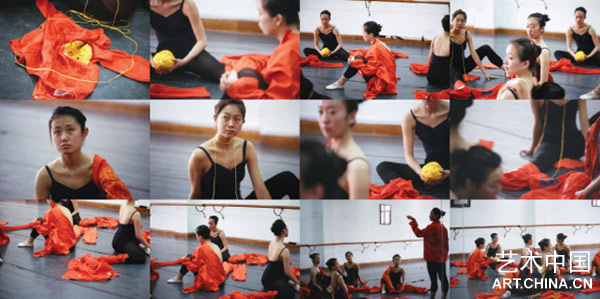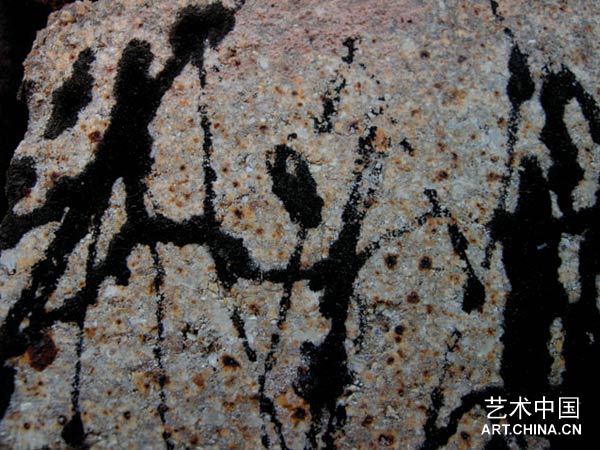 蒸發-黃色柵格Transpire-yellow grid
裝置 混合媒介installation, mix media, dimension vary Rolf A. Kluenter2006-2008
蒸發-黃色柵格Transpire-yellow grid
裝置 混合媒介installation, mix media, dimension vary Rolf A. Kluenter2006-2008
Our Life--2008當代藝術展
Our Life——2008 Contemporary Art Exhibition
策展人:吳文星
Curator: Wu Wenxing
藝術總監:楊邦本
Director: Yang Bangben
學術主持:蔣正根
Art Director: Jiang Zhenggen
執行:範文勇
Perform:Fan Wenyong
展覽助理:朱秀琴
Assistant: Zhu Xiuqin
展期:2008年11月8日至2008年12月8日
Duration: 8th Nov. 2008 —— 8th Dec. 2008
開幕式:2008年11月8日(星期六)下午:18:30
Opening: Saturday, 8th Nov, 6.30pm
地點:文定生活創意中心 上海文定路204號,Wen Ding Plaza。
Venue: No.204 Wen Ding Road, Wen Ding Plaza.
參展藝術家Artists (按字母順序):仇德樹,陳心懋,丁乙,鄧國源,管策,何塞邦,洪磊,Julia Lohmann,金江波,蔣正根,Paul Devautour,浦捷,Rolf A. Kluenter,蘇新平,宋光智, Susanne Junker,譚根雄,唐添,王慶松,吳文星,顏磊
郵箱:wuwenxing2003@hotmail.com
 contryN0.66攝影Photograph 吳文星 2008
contryN0.66攝影Photograph 吳文星 2008
城市.生活.藝術
蔣正根
“文定生活創意中心”原是一坐舊式工業廠房,在它改建的過程中,設計者保留了原有的建築形態和文化生態,如同北京的“798”與上海的“莫幹山50號”一樣,它們都有著那個年代曾有過的文化記憶。“莫幹山50號”是上海目前最大的藝術創意園區,並成了上海城市的一個文化概念和文化符號。而“文定”的設計者有意將他們的新領地打造成上海又一個生活創意的新景區。
文化在當代城市的發展中是一個要素,也是一種産業。文化在其産業化的過程中除了創意還有一個重要的資源,即由歷史形成的人文景象和人文符號。如同經濟學家預測的那樣:文化與經濟共存演進將是未來經濟增長的典型化趨勢。由於文化在城市化進程中扮演的這種作用,所以讓藝術與生活的自然融和,彰顯城市文化性格將是我們一個時期內的文化策略。於是,一個稱之謂Our Life的當代藝術展,將在這種融洽之中拉開它的帷幕。
此次展覽在尊重藝術家本土意識和觀念的前提下,以城市、生活、藝術為主旨,強調藝術作品的時代性與當下性以及藝術的個性與創造性;從而體現城市文化的性格,這就是此次展覽的目的和意義所在。為了適宜展覽的主旨和特性,參展的作品也以最具城市藝術特徵的圖片、影象、裝置和當代繪畫等為主。同時,此次展覽也是跨界文化的藝術交流。
談到當代藝術,我們一般泛指它學術上的前衛性和批判性外,在時間上主要指的就是發生在今天的藝術,在內涵上指的是它具有的某種時代精神和時代語言特徵。當代藝術從本質上講是城市文化的一種體現,因為當代藝術的生存與發展必須以城市為依託,城市是當代藝術的基礎。我們回眸二十世紀現代藝術發展的過程就不難發現:城市與藝術的發展有著無法割捨的關聯,城市生活強調的視覺特性和感官意識為現代藝術的發展提供了某種可能性。現代藝術史上所謂的立體主義繪畫其實與城市的結構有著天然關聯,未來主義藝術的産生與城市的運動和速度息息相關,而波普藝術的掀起顯然與城市的商業要素和我們所處的複製時代有關。城市不但為現代藝術的發展提供了某種形態結構和形式語言,更重要的是它賦予了藝術家某種新的空間觀、價值觀和未來觀。可以這麼説,當代藝術的價值就在於它的這種當代性,而對城市文化的探索與表達就構成了當代藝術的一個重要特徵。
其二,城市作為一個文化的地理概念,其所謂的社會屬性是一個生物有機體的概念。如同生物有機體的生成和演化一樣,城市也伴隨著自身的繁衍、發展,以及在其歷史變遷中不斷積澱而生成為獨立的城市文化。而當下席捲全球的城市化現象,已不是一個簡單城市區域擴張和人們生活方式的急速改變。如同被命名為“快城快客”的上海第七屆雙年展那樣,一個“快”字反映的卻是一個城市在其現代化進程中整體形態的急劇演變,以及它快速中的多變性和不確定性。然而,對城市形態及其趨向不確定性的探索正是當代藝術所面臨的任務和職責;同樣,當代藝術發展的不可知性,也是城市發展的複雜性在其文化形態上的自然反應。藝術家置身於這個時代,其作品理應反映和表現它。藝術只有不斷地在與城市的交流與碰撞中達到情感的共鳴與相互認可,從而自身得到不斷地完善,這樣我們的城市文化才得以創新和發展。事實上在城市化的進程中,藝術的興衰和藝術家的狀態總是與城市的發展息息相關的,上個世紀五、六十年代“紐約畫派”(也稱抽象表現主義)的興盛正是得益於歐洲大批藝術精英的遷入和美國城市文化的強盛。中國當代藝術從地下與邊緣迅速成為今日的主流藝術,其中只用了十幾年的時間,這源自中國城市經濟的迅速發達和城市資本的大量介入。所以,不管是早年的巴黎,還是以後的紐約,以及時至今日的“798”或“莫幹山”莫不如此。這是因為城市不僅是一種人文景觀,或某種文化與資訊的中心,重要的是它體現了一種生命的存在與生存狀態。
其三,城市又是一個具有世界性概念的符號。當代藝術之所以能跨地區、跨疆域和跨文化的交流,就得益於當代城市文化的存在。此次展覽邀請的二十位中外藝術家來自不同的城市。這些有著不同文化背景的藝術家都是活躍在當代藝術前沿,在學術上有著相當建樹的優秀藝術家,其中不乏參加過威尼斯雙年展,且享譽當今國際畫壇的藝術家。雖然這些藝術家的藝術觀唸有著各自的差異,個人的藝術語言也不盡相同,但他們卻相聚在一起。這其中有來自上海的仇德樹,陳心懋,丁乙,何賽邦,蔣正根,浦捷,譚根雄,吳文星和唐添;來自北京和天津的王慶松、顏磊、金江波和鄧國源;來自廣州、南京和常州的宋光智、管策和洪磊;以及來自德國和法國的尤莉亞.洛曼Julia Lohmann,柯羅夫,Rolf A. Kluenter,雲筱蘇Susanne Junker和保羅.德沃圖Paul Devauou等藝術家。這些藝術家有常年蟄居在這個城市的,有曾經生活在某個城市如今卻客居京城的,還有來自異國他鄉卻對這個城市充滿嚮往而行走在兩地的。他們平靜地生活在各自的城市,恪守著自己的創作原則;用他們純熟的語言進行著當代藝術的實踐和創造,用他們的作品訴説著生命與生存的關係。這些藝術家立足於對現代城市的探索和表達,並以他們的實踐給今日藝術的發展提供了一種多樣性的可能。他們的文化態度和追求也體現了在藝術全球化潮流下,城市藝術的多極形態和藝術家的藝術狀態。筆者以為,當代藝術作為人類創造力的一種特殊形態,是其自身所包涵的城市文化特性讓不同種族和信仰的藝術家走到了一起,這也從某個側面反映了當代城市文化所具有的包容性和寬泛性的特徵。
二十一世紀的城市屬於文化的城市。城市文化既是城市的個性表達,也是城市集體意識在當代語境中的抽象呈現。城市文化的核心內力在它自身的進程中,啟動了人們內在的文化需要,並引領著資訊與資金、人才與資源、時尚與消費的文化風尚。然而,現實中的文化卻滲透在生活的各級形態之中,而且需要借助這種形態的呈現演繹成一種精神的載體;而由藝術構成的文化生態就催生了城市文化符號的誕生,通過它我們就能感悟到遁隱在城市背後的歷史文脈,以及由此形成的城市性格;通過它我們還能從中觀照到自己。所以當代藝術不應該是簡單、晦澀的哲學概念的表達,而應把對普遍人性的關注放在其表達的首位。因為,一個脫離了人文思想和人文情懷的藝術是沒有靈魂的藝術,同樣,這樣的城市也是沒有靈魂的城市。
城市是美好的,今天,城市似乎成了人們生活的一個方式和希望,也似乎成了生命的一種歸宿。
2008年10月于浦江東岸
 Studio Yoon-Ja & Paul Devautour 裝置Device Paul Devautour 2001
Studio Yoon-Ja & Paul Devautour 裝置Device Paul Devautour 2001
City.Life.Art
Jiang zhenggen
The original structure of Wending Living Style Plaza is an old factory. In the process of rebuilding, the original frame has been left. Same as the “798”of Beijing and “No 50 of Moganshan”,they all have the culture memory in that times. The“No 50 of Moganshan” is the biggest art originality garden at present, and it also becomes a culture concept and symbol of shanghai. While the designer of Wending intentionally to build a new living style plaza in Shanghai.
Culture is an important factor as well as an industry during the development of contemporary city. In the process of industrialization, culture has an important resource besides creation, which is human landscape and symbol formed by history. As what economist predicted, culture and economic coexistence and development is a typification trend of future economic increase. Because of this function of culture in the process of civilization, our culture strategy in a period is to display city’s culture character. So a contemporary art named “our life” is going to open in the atmosphere of harmonization.
On the premise of respecting artist’s consciousness and concept, based on the city, life and art, emphasizing time and present character of work of art, and personality and creativity of art, the intention of this exhibit is to embody the character of city culture. In order to correspond to the lemma and characteristic of this exhibit, the main works on the exhibit are picture, video, installation and contemporary painting with the furthest city art character. Meanwhile, this exhibit is an across-culture art exchange.
Speaking of the contemporary art, which generally refers to avant-garde and critical academically, happening at present and containing modern spirit and language character. Contemporary art is essentially a sort of embodiment of city life. Its existence and development must rely on city, so city are the base of contemporary art. Looking back the process of modern art development in the past 100 years, we will easily find that the connection of cities and art development cannot be separated. The vision characteristic and sense consciousness emphasized by city life provide the possibility for development of modern life. The solidism painting of contemporary art history actually connected with city organization naturally. The generation of futurism art is closely linked the rate of city’s transformation, while the start of Bopu art is obviously related to the city’s business factors and our living copy times. City not only provide some configuration structure and format language for the contemporary art, the important is that it endow the artist with space, value and future view. It can be say that the value of contemporary art is because it happened today, while the exploring and expression of the city life formed an important character of contemporary art.
Second, as a concept of culture geographic, the community property of city is also a concept of organism. Just as the evolution of organism, city evolves into an independent city culture with its reproduction, development and accumulation during historical changes. Regional expansion of a city and rapidly life style changing is not a global city phenomenon.
As the theme of Shanghai 7th Biennial– fast city fast people, the word “fast” reflects city’s overall shape in rapid evolution during the process of modernization and its variability and uncertainty. However, the tasks and responsibilities contemporary arts facing right now are the exploration of city patterns and the tendency of uncertainty. Meanwhile, unsuspected development of contemporary arts is also a nature reaction in its culture pattern during the complicated city growth, which is reflected and displayed in modern artists’ works. With the continuing communication and exchange, arts would reach emotional resonance and mutual recognition so as to get self-development, thus city culture could grow and innovate. In fact, during the process of urbanization, the rise and fall of arts and the state of artists closely interrelated to city development. In 1950s and 1960s, the prosperous of New York School (also known as abstract expressionism) profits from the immigration of a large number of European elites and American urban cultural prosperity. It only cost more than a decade for Chinese contemporary arts to develop from edge and alien to mainstream arts, as numerous urban capital is involved. Therefore, no matter the early years in Paris or later years in New York, as well as today’s 789 and Moganshan, they all share the same concept. City is not only a human landscape or the center of culture and information but also reflects the existence of life and the state of living.
Third, city is also a symbol which carries the worldwide concept. Contemporary arts are able to communicate by crossing regions, territories and culture as the existence of contemporary cities. Twenty arties are invited to this exhibition are from different cities. They are all outstanding artists from varies culture backgrounds still actively play on contemporary arts stage and make considerable contribution on academic field. Some of the artists attended Venice Biennale and world-renowned in contemporary arts. These artists gather together in spite of varied art concept and language. Among them, Qiu deshu, Chen xinmeng, Ding yi, He saibang, Jiang zhenggen, Pu jian, Tang genxiong, Wu wenxing and Tang tian are from Shanghai; Song Xinping, Wang qinsong, Yan lei, Jing jingbo and Deng guoyuan are from Beijing and Tianjing; Song guangzhi, Guan ce and Hong lei are from Guangzhou, Nanjing and Changzhou as well as Julia Lohmannas, Rolf A. Kluenter, Susanne Junke and Paul Devauou are from Germany and France. Some of these artists lived in the city for years, and some who used to live in cities now live in Beijing once in a while, others who from abroad travel back and forth between Shanghai and Beijing as they are attracted to this city. They are living their life peacefully and following their art principle strictly. With sophisticated language and works, they are carrying on their practice and creative in contemporary arts and tell the relationship between life and severance. These artists base themselves on the exploration and expression of modern cities and provide varied possibility of contemporary arts development by their practice. Their culture attitude and pursuit reflect the multiple patterns of city arts and artists’ status under the trend of art globalization. In writer’s opinion, as contemporary art is a special pattern of human creativity, which include culture characteristic of cities gather artists from different race and belief together. At certain point, it also reflects the containment and broadness of modern city culture.
The city in 21st century is called culture city. City culture is not only the characteristic expression of city but also abstract presentation in context of group consciousness of city. The centre of city culture is in its process which rouses the culture desire inside of people and leads the culture trend of information and capital, talents and resource, fashion and consumption. However, culture in real life permeates in all levels of life; also, it needs the presentation of these levels to deduce a certain spiritual carrier. Culture ecology formed by arts procures the birth of culture symbol. We understand the culture context concealed behind history and characteristic of city and observe ourselves through culture ecology. Therefore, contemporary arts shouldn’t be simple and obscure philosophy expression, which should be the primacy in the expression of general human nature. Because arts separate from humanistic minds and feelings are arts without soul. Also, such city is city without soul.
City is wonderful. Nowadays, city seems has become a way of living and hopes, and also destination of life.
East of Huangpu River on Oct,2008
|

